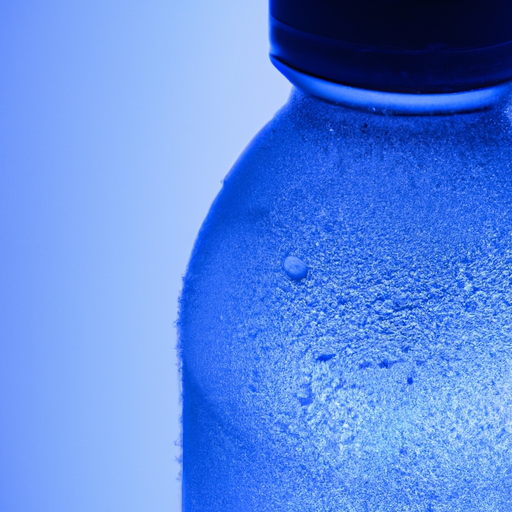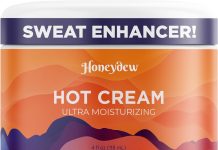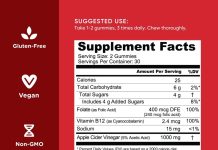Are you in need of some tips on how to stay hydrated during exercise? Look no further! We’ve got you covered with all the information you need to ensure you’re keeping yourself adequately hydrated while breaking a sweat. Whether you’re a regular gym-goer or just starting to incorporate physical activity into your routine, staying hydrated is crucial for optimal performance and overall well-being. Don’t worry, we’ve got some simple yet effective methods to keep you hydrated and feeling your best during your workout sessions. So, let’s quench your thirst for knowledge and dive into the world of hydration during exercise!
Review contents
Importance of Hydration During Exercise
Understanding the Water Balance
As we engage in physical activity, it is crucial to understand the importance of maintaining a proper water balance in our bodies. Water plays a vital role in various bodily functions, including regulating body temperature, transporting nutrients, lubricating joints, and aiding in digestion. When we exercise, our bodies lose water through sweat, and if we don’t replenish this lost fluid, we risk becoming dehydrated, which can have detrimental effects on our performance and overall health.
Effects of Dehydration on Performance
Dehydration can significantly impact our exercise performance. Even mild dehydration of just 2% to 3% of body weight can lead to decreased aerobic capacity, reduced muscular strength and endurance, impaired mental focus, and increased perceived effort during exercise. It can also hinder our ability to regulate body temperature, putting us at higher risk for heat-related illnesses. Simply put, being properly hydrated can make a world of difference in our exercise performance and help us achieve our fitness goals more effectively.
Signs and Symptoms of Dehydration
Recognizing the signs and symptoms of dehydration is crucial in maintaining optimal hydration levels during exercise. Common signs include increased thirst, dry mouth, fatigue, dizziness, headache, dark-colored urine, decreased urine output, and muscle cramps. If any of these symptoms arise, it is a clear indication that we need to replenish our fluids immediately. Ignoring these signs can lead to further complications and a decline in our exercise performance.
Benefits of Staying Hydrated
Staying hydrated offers a multitude of benefits beyond just preventing dehydration. Adequate hydration improves our cardiovascular function, allowing our hearts to pump blood more efficiently to our working muscles. It also aids in nutrient absorption and waste removal, helping us to recover quicker and reduce post-exercise soreness. Additionally, hydration supports our immune system and helps maintain healthy skin. By prioritizing hydration during exercise, we can enhance our overall fitness and well-being.
Determine Your Hydration Needs
Factors Affecting Hydration Needs
Our hydration needs during exercise can vary depending on various factors, which we need to consider to determine the appropriate fluid intake. These factors include the duration and intensity of exercise, temperature and humidity levels, individual sweat rate, and personal factors such as body size, age, and gender. By understanding these factors and their impact on our fluid needs, we can tailor our hydration strategy to ensure we stay properly hydrated throughout our workouts.
Calculating Sweat Rate
Calculating our sweat rate is a useful tool in determining our personalized hydration needs. To do this, we weigh ourselves before and after exercise, taking into account the amount of fluid consumed during the activity. The weight difference, in conjunction with the exercise duration, allows us to estimate our sweat rate in liters per hour. This information can guide us in adjusting our fluid intake accordingly to maintain optimal hydration levels.
Monitoring Urine Color
Monitoring our urine color is a simple yet effective way to gauge our hydration status. A pale yellow or straw-colored urine indicates proper hydration, while darker urine suggests dehydration. By paying attention to our urine color throughout the day, not just during exercise, we can actively monitor our hydration levels and make necessary adjustments to our fluid intake as needed.
Adjusting Fluid Intake
Once we have determined our individual hydration needs, it is essential to adjust our fluid intake accordingly. During longer duration exercises or those performed in hot and humid environments, we may need to increase our fluid intake to compensate for increased sweat losses. On the other hand, shorter and less intense workouts may require less fluid intake. It is crucial to listen to our body’s signals, stay mindful of our hydration needs, and adjust our fluid intake accordingly to ensure optimal performance and safety.
Pre-Exercise Hydration Strategies
Drink Sufficient Fluids Before Exercise
Proper hydration begins even before we start exercising. It is recommended to consume fluids, preferably water, in the two hours leading up to our workout. Aim to drink approximately 16-20 ounces (500-600 ml) of water during this time to ensure we start our exercise properly hydrated. This pre-exercise hydration strategy helps establish a good foundation for maintaining fluid balance throughout our workout.
Avoid Alcohol and Caffeine
While it may be tempting to have a cup of coffee or an alcoholic beverage before exercise, it is essential to minimize or avoid their consumption. Both alcohol and caffeine act as diuretics, promoting urine production and potentially leading to dehydration. Instead, opt for water or other hydrating beverages to support your body’s fluid needs during exercise.
Consume Foods with High Water Content
In addition to fluid intake, incorporating foods with high water content can also contribute to pre-exercise hydration. Fruits and vegetables, such as watermelon, cucumbers, and citrus fruits, are excellent choices as they contain a significant amount of water. Including these hydrating foods in our pre-workout meals or snacks can provide an extra boost to our hydration levels and enhance our overall exercise performance.
Hydration During Exercise
Drink Fluids at Regular Intervals
During exercise, it is crucial to drink fluids at regular intervals to maintain proper hydration. The exact amount will vary depending on individual factors and exercise intensity, but a general guideline is to aim for 7-10 ounces (200-300 ml) every 10-20 minutes. Sipping small amounts of fluid throughout the workout allows for better absorption and minimizes any discomfort or sloshing in the stomach.
Choose the Right Fluids
When selecting fluids for hydration during exercise, water is usually the best choice for most individuals. It is readily available, cost-effective, and generally sufficient to meet our fluid needs. However, for intense and prolonged activities lasting longer than an hour, incorporating sports drinks can be beneficial. Sports drinks contain carbohydrates and electrolytes that help replenish energy stores and maintain electrolyte balance, enhancing our performance and preventing fatigue.
Consider Electrolyte Replacement
Electrolytes play a vital role in maintaining fluid balance and optimal muscle function. During extended or intense exercise sessions, we may need to consider electrolyte replacement to compensate for losses through sweat. Consuming electrolyte-rich sports drinks, electrolyte tablets, or including sodium-rich foods in our post-workout meals can help replenish these essential minerals and restore our electrolyte balance.
Use Sports Drinks or Water
The choice between sports drinks and water ultimately depends on the nature and duration of our exercise. For moderate-intensity workouts lasting less than an hour, water is usually sufficient to meet our hydration needs. However, for more prolonged or higher intensity activities, sports drinks can provide the necessary carbohydrates and electrolytes to fuel our performance. It is essential to assess the demands of our exercise routine and choose the appropriate fluid option accordingly.
Monitoring Hydration Levels
Weighing Yourself Before and After Exercise
A practical and straightforward method of monitoring our hydration levels is by weighing ourselves before and after exercise. For every pound lost during the workout, we can estimate that as roughly 16 ounces (500 ml) of fluid that needs to be replenished. Regularly tracking these weight changes allows us to understand our individual sweat rate, make adjustments to our fluid intake, and ensure we are adequately hydrating before, during, and after exercise.
Checking Urine Color and Frequency
Our urine color and frequency provide invaluable insights into our hydration status. A pale yellow or straw-colored urine indicates adequate hydration, while darker-colored urine suggests dehydration. Additionally, monitoring the frequency of urination can offer clues about our fluid balance. Ideally, we should aim to urinate every 2-4 hours. By observing these urine-related indicators, we can make necessary adjustments to maintain proper hydration.
Monitoring Thirst Levels
Listening to our body’s thirst signals is another way to monitor our hydration levels. While thirst is not always a reliable indicator of hydration status, it can be a valuable tool in reminding us to drink fluids during exercise. Ideally, we should aim to stay ahead of thirst and drink fluids regularly throughout the workout, even before feeling excessively thirsty. Remember that by the time we feel thirsty, our bodies are already experiencing some level of dehydration.
Tips for Staying Hydrated
Carry a Water Bottle
A simple yet effective tip for staying hydrated throughout the day is to carry a water bottle with us wherever we go. Having a water bottle readily available serves as a constant reminder to drink fluids regularly. Opt for a bottle that is easy to carry, leak-proof, and holds an adequate amount of water to meet our individual hydration needs. By making water easily accessible, we are more likely to sip frequently, helping maintain optimal hydration levels.
Set Reminders
In our busy lives, it is easy to forget about our fluid intake. Setting reminders on our phones or using hydration reminder apps can help ensure we stay on track with our hydration goals. These reminders can be scheduled at regular intervals to prompt us to drink fluids throughout the day, including before, during, and after exercise. By incorporating reminders into our daily routine, we create a habit of staying adequately hydrated.
Sip Fluids throughout the Day
Staying hydrated is not just about drinking fluids during exercise; it should be a continuous practice throughout the day. Sipping fluids regularly, even when not physically active, helps prevent dehydration and supports our overall health. Aim to drink small amounts of water or other hydrating beverages every hour, gradually reaching our daily fluid intake goals. By spreading our fluid consumption throughout the day, we maintain a consistent state of hydration.
Include Hydrating Foods in Your Diet
Hydration isn’t just about what we drink; it’s also about what we eat. Including hydrating foods in our diet can significantly contribute to our overall fluid intake. Foods such as watermelon, strawberries, cucumbers, and lettuce have high water content, making them excellent choices to add to our meals and snacks. Additionally, soups, smoothies, and herbal teas can provide hydration while also offering essential nutrients. By incorporating these hydrating foods into our diet, we support our hydration goals on multiple fronts.
Addressing Hydration Challenges
Exercising in Hot or Humid Environments
Exercising in hot or humid conditions poses unique hydration challenges. When exposed to high temperatures, our bodies sweat more to regulate body temperature, leading to increased fluid losses. In such circumstances, it is crucial to increase our fluid intake to compensate for these losses. Drinking cool fluids, using portable misting fans, and wearing lightweight, moisture-wicking clothing can aid in managing the heat and reducing the risk of dehydration during exercise in hot or humid environments.
Dealing with Sweat Loss
Individuals who tend to sweat excessively during exercise may face additional hydration challenges. Excessive sweat loss can increase the risk of dehydration, electrolyte imbalances, and muscle cramps. In these cases, it may be necessary to consider fluid replacement strategies that include sports drinks or electrolyte supplements. Electrolyte tablets, powders, or gels can help replace essential minerals lost through sweat and maintain proper hydration levels.
Overcoming Intense Exercise Hydration Issues
Intense exercise, such as endurance events or multi-hour training sessions, presents unique hydration challenges. Sweat losses during long-duration activities can accumulate quickly, increasing the risk of dehydration. To overcome these hydration issues, it is essential to plan and practice proper fluid and electrolyte strategies specific to the demands of the activity. This may involve consuming sports drinks or energy gels at regular intervals, carrying fluids in hydration packs, or strategically refueling and rehydrating during breaks. Seeking guidance from a sports nutritionist or coach experienced in managing intense exercise hydration can be highly beneficial in preparing for such activities.
Common Myths about Hydration
Drinking Water Prevents Cramps
Contrary to popular belief, drinking water alone cannot guarantee the prevention of muscle cramps. While staying hydrated is essential for overall exercise performance, cramping can occur due to various factors, including muscle fatigue, electrolyte imbalances, and neuromuscular factors. Adequate hydration combined with balanced electrolyte intake and proper training can help reduce the risk of cramps, but it is not a foolproof solution on its own.
Clear Urine Always Indicates Good Hydration
While pale yellow or straw-colored urine typically indicates good hydration, it is not always the case. Factors such as medications, vitamins, and certain foods can influence urine color, making it lighter or darker. Additionally, our hydration status can vary throughout the day, even if our urine color remains consistent. It is important to consider multiple indicators, such as urine frequency, thirst levels, and overall well-being, rather than relying solely on urine color to assess hydration.
Thirst is Sufficient Indicator of Hydration
While our body’s thirst mechanism is designed to signal our need for fluids, relying solely on thirst as an indicator of hydration can be risky. By the time we feel thirsty, our bodies have already started to experience mild dehydration. Thirst can also be influenced by factors such as age, activity level, and environmental conditions. To ensure optimal hydration, it is crucial to establish a regular fluid intake routine, regardless of thirst sensations.
Factors to Consider for Individual Hydration
Body Size and Composition
Our body size and composition play a role in determining our hydration needs during exercise. Larger individuals generally have higher fluid requirements due to a larger body mass and higher metabolic rates. Similarly, individuals with a higher body fat percentage may need to adjust their fluid intake as fat tissue does not retain water as effectively as lean tissue. Understanding our unique body characteristics can help us tailor our hydration strategy accordingly.
Fitness Level and Duration of Exercise
Our fitness level and the duration of our exercise session also impact our fluid needs. Fit individuals tend to have more efficient sweating mechanisms, requiring less fluid intake compared to less fit individuals. Additionally, longer duration workouts require more fluid replacement to compensate for increased sweat losses. Adjusting our fluid intake based on our fitness level and the duration of our exercise allows us to maintain optimal hydration levels.
Climate and Environmental Conditions
The climate and environmental conditions in which we exercise greatly influence our hydration needs. Hot and humid weather increases sweat rates, leading to greater fluid losses and a higher risk of dehydration. Cold and dry environments can also contribute to dehydration as we may not feel as thirsty or be aware of our fluid needs. When exercising in extreme weather conditions, it is essential to adjust our fluid intake accordingly and take additional precautions to ensure we stay properly hydrated.
Underlying Medical Conditions
Certain medical conditions can impact our hydration needs and how our bodies regulate fluids. Conditions such as diabetes, kidney diseases, and gastrointestinal disorders may require specific fluid intake or restrictions. It is important to consult with a healthcare professional to understand any specific hydration considerations related to our medical conditions and develop an appropriate hydration plan.
Seeking Professional Guidance
Consulting with a Sports Nutritionist
For individuals with specific hydration needs or those participating in competitive sports or intense training, consulting with a sports nutritionist can be immensely beneficial. A sports nutritionist can assess our individual needs, provide personalized hydration recommendations, and develop a comprehensive plan that takes into account our unique circumstances and goals. Their expertise can help optimize our performance and ensure proper hydration during exercise.
Getting Medical Advice
If we have any underlying medical conditions or concerns about our overall health and hydration, consulting with a healthcare professional is vital. They can evaluate our medical history, perform necessary tests, and provide guidance specific to our health conditions. Their expertise ensures that we can exercise safely and make appropriate adjustments to our hydration plan based on any medical considerations.
Developing a Personalized Hydration Plan
Every individual is unique, and therefore it is important to develop a personalized hydration plan that suits our specific needs. By considering factors such as our body size, exercise intensity, duration, and environmental conditions, we can establish a plan that helps us stay properly hydrated. This plan should incorporate strategies for pre-exercise, during exercise, and post-exercise hydration, as well as methods for monitoring our hydration status. Having a personalized hydration plan ensures that we prioritize our fluid intake and optimize our exercise performance and overall well-being.
In conclusion, staying hydrated during exercise is crucial for maintaining optimal performance, preventing dehydration, and supporting overall health. By understanding the importance of hydration, determining our individual fluid needs, implementing effective hydration strategies, and monitoring our hydration levels, we can ensure we stay properly hydrated throughout our exercise routines. Remember, staying hydrated is not just a one-time task – it is an ongoing commitment to our well-being and fitness goals. So let’s grab our water bottles, sip regularly, and enjoy the benefits of staying hydrated during exercise!



























